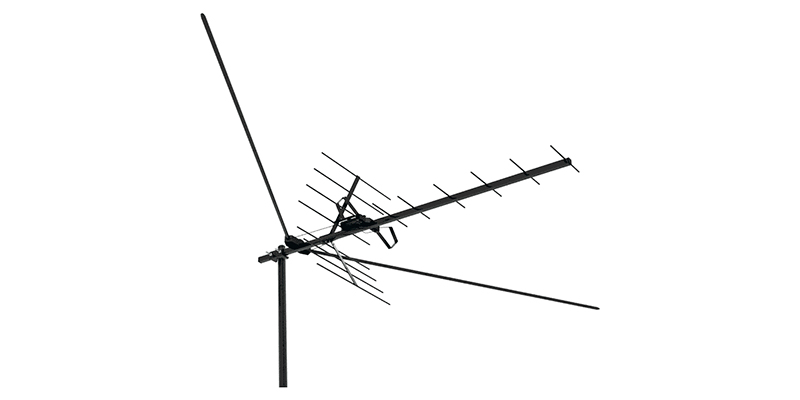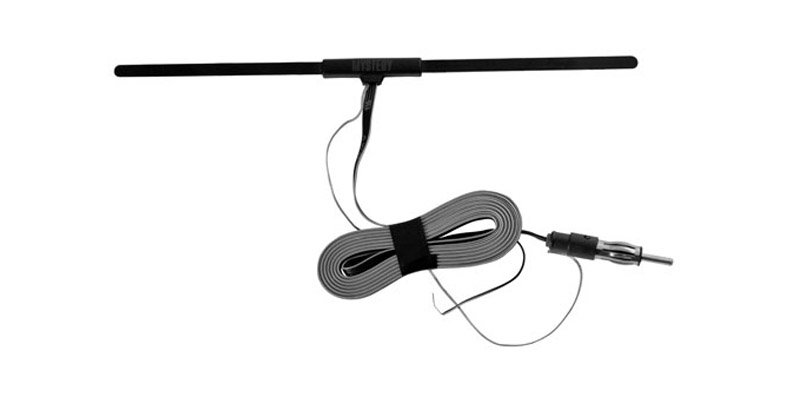What is the difference between active and passive antennas
When choosing an antenna to watch terrestrial television, you may encounter a rather unusual offer from the seller - to set “active” instead of “passive”. And what is the difference between these two types - it is not clear.
We will understand what is the difference between active and passive antennas - and which ones are better to use.
How do antennas work
On-air television is transmitted over the air in the form of radio waves of various frequencies. And this is true for both analog and digital signals. Antennas, in turn, are necessary for their capture.
The metal parts of the antenna, being in an electromagnetic field formed by a television signal, are “induced”. They form a current that enters the TV. It is then converted by the device into a video and audio signal that is understandable to the viewer.
In principle, the operation of the antenna device is very simple. However, this mechanics necessitates the placement of receiving equipment in such a way that the current is induced in it most effectively. It is not enough just to put a metal “slingshot” on the window or place it on the roof — you also need to turn it so that the “blades” receive the signal in the best way.
What is a "passive antenna"

The above technique is valid primarily for passive configurations. They are simply a metal signal receiver, connected via cable to a TV or radio. They do not have any additional structural elements - just a few “blades” that induce current.
Passive antennas are distinguished by the complexity of their geometry. They have many "horns", which are divided into smaller "antennae." In some cases, they can turn into grids. This is done so that the metal frames, being in the electromagnetic field, best capture the radio waves.
However, powerful radio waves - for example, from transmitters located nearby - can also catch passive antennas with a simple design. For example, from hangers and two tin cans. Such an “antenna” can easily “catch” the channel “Russia-24”, because it even catches fish, there are so many transmitters from it, in every city, and even in the region.
Advantages of a passive antenna
-
Simplicity and durability. Deprived of any unnecessary details, such a device can work for decades;
-
There is no risk of closing the antenna cable when used properly;
-
Low price.
Disadvantages of a passive antenna
-
It is required to accurately orientate the metal parts in space, directing either towards the nearest tower or perpendicular to it (depending on the geometry and specific model);
-
It is necessary to install at high altitude Usually such "slingshots" are placed on the roofs of houses or detached poles;
-
The quality of signal reception depends on many factors, including the location of nearby high-voltage lines, trees, buildings, structures, as well as weather conditions and terrain.
It is most difficult to install a passive antenna in urban environments.It needs to be placed on the roof of the house and pull the cable through a lot of floors. When installing on the facade or balcony, there may be questions from the HOA or the Criminal Code, and when installed directly in the room - the signal quality may be desired.
What is an "active antenna"

Active antennas are structurally similar to passive ones - there are metal “horns” that catch radio waves and induce current in receiving equipment. However, the signal before entering the TV is processed by the peripheral device.
Active antennas can be installed a variety of peripheral devices. For example, noise suppressors, signal amplifiers, and so on. Thanks to this, it is possible to reduce the number and size of the “horns” to very tiny ones - the main thing is that a current is induced in them at least a little, and the amplifier will do the rest.
Virtues
-
Easy installation. They can be placed both outside and inside the room. The quality of signal reception also does not depend on weather conditions and the presence of some obstacles nearby;
-
Compact size. There are models only a few tens of centimeters long. They can even stick to the window - and use;
-
Resistance to interference. The signal is almost always the same and does not depend on temporary external factors.
disadvantages
-
Relatively high price. An active antenna can cost several times more than a passive one;
-
Disputed reliability and durability. Such devices use a multitude of microelectronic components that can break down over time;
-
The need for constant power supply. Without it, an active antenna can both become “passive” and does not work at all.
It is worth noting that the assurances of sellers that the active antenna works much better than the passive one in most cases are just a marketing ploy. Yes, it provides a more reliable and stable signal reception. But it’s impossible to show 15 channels where it used to catch only 2.
Which one to choose?
Active antennas are most often chosen in the following cases:
-
Installation outside the city, in regions remote from transmitters;
-
Use in areas with an increased amount of external interference (near railways, highways, high-level equipment);
-
Installation in rooms with thick walls, including in houses of reinforced concrete;
-
Accommodation in areas remote from the transmitter of digital television.
Digital television implies a higher signal density. Because of this, there are serious demands on the quality of the reception. As a result, the antenna equipment needs to be sent in the direction of the broadcasting “tower”, and if the receiver is far from the transmitter, somehow strengthen it.
And if we consider that all Russian regions will switch to digital television in the summer of 2019, now (in April 2019) it is pointless to buy a passive antenna for installation outside the city.











